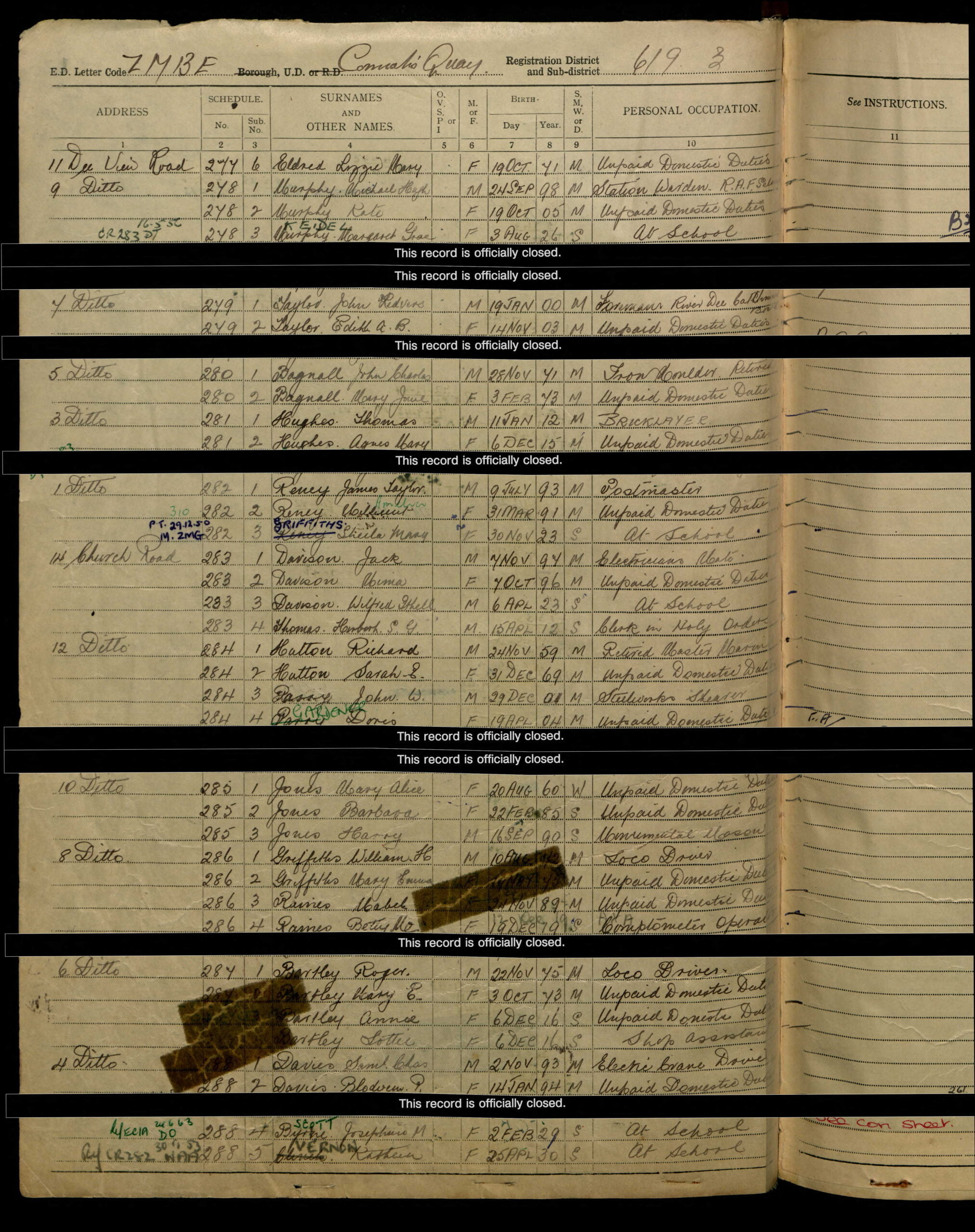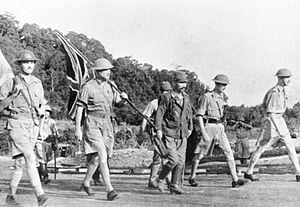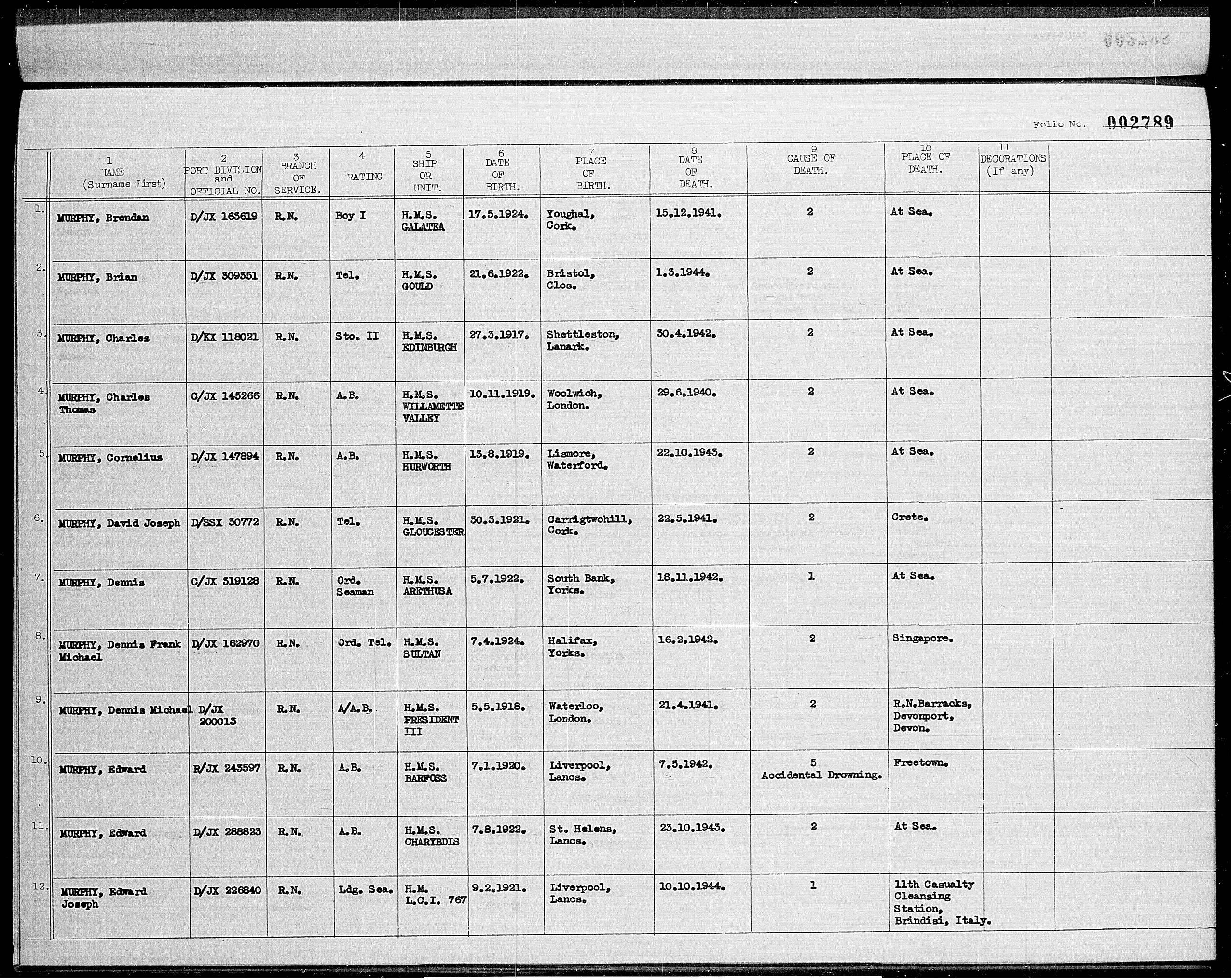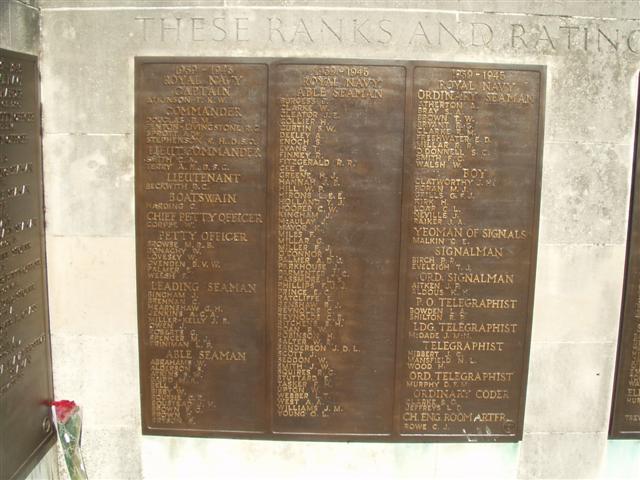According to the British armed forces and overseas deaths and burials, Dennis Frank Michael Murphy had been born on the 7th April 1924, in Halifax, the West Riding of Yorkshire. He was the son of Michael Hugh & Kate Murphy (nee Adams), who, I believe, had married in the December quarter of 1923 in Halifax (Volume Number: 9a, Page Number: 1033).
I believe that their second child, Margaret Grace Murphy, was born in the September quarter of 1926, in the Registration District of Alverstoke (Vol. 2b, Page 865). The district Alverstoke is in the county of Hampshire, so the family must have moved around for work or perhaps, as Michael Hugh Murphy had a job in an R.A.F. Camp in 1939, perhaps he was in the Services himself, but again, I cannot find definitive proof he was.
The first time we see the family is on the 1939 National Register which was taken on the 29th of September 1939, a few weeks after war was declared. This source gives us the dates of birth of each entry. The family were living at 9, Dee View Road, Connah’s Quay and Michael Hugh Murphy was head of the household, his birth is recorded as the 24th of September 1898 and he was a Station Warden R.A.F. Seland (sic). Kate Murphy had been born on the 19th of October 1905 and as most women who did not have a job, was described as doing “Unpaid Domestic Duties.” There are three children on this Register, but only one has any details, she was Margaret Grace Murphy, who had been born on the 3rd of August 1926 and was “At School.” The other two closed or redacted records, I believe, may have been Dennis and another sibling, who I cannot identify as yet. If he is one of the children, then he would have been just over 15 years old. These records are closed due to the 100-year law, they can be opened if the person is dead.
I have no records or information regarding Dennis’s childhood, so any help would be greatly appreciated.
Neither do I know if he enlisted into the Royal Navy, or was he conscripted, as young men over 18 were obliged to do.
However, he found himself on H.M.S. “Sultan,” and he eventually became an Ordinary Telegraphist. He was to be part of an historic event, as Winston Churchill, called it the “worst disaster” in British military history.
HMS Sultan
HMS Sultan (shore establishment 1940) was the naval base at Singapore, commissioned in 1940 as a successor to HMS Terror. She was abandoned after the fall of Singapore in 1942.
HMS Sultan II was the accounting base at Singapore for sea-going tenders, commissioned in 1940 and paid off in 1941.
HMS Sultan III was the accounting base at Penang, commissioned in 1940 and paid off in 1941.
HMS Sultan IV was the accounting base at Singapore between 1941 and 1942.
Please read the website – http://www.godfreydykes.info/SINGAPORE_RUN_DOWN_1971.htm
https://en.wikipedia.org/wiki/Battle_of_Singapore
Battle of Singapore – From Wikipedia, the free encyclopedia
Battle of Singapore
Part of the Pacific Theatre of World War II
Surrender Singapore.jpg (In Folder)
Lieutenant-General Arthur Ernest Percival, (right), led by a Japanese officer, walks under a flag of truce to negotiate the capitulation of Allied forces in Singapore, on 15 February 1942. It was the largest surrender of British-led forces in history.
Date 8–15 February 1942
Location Singapore, Straits Settlements
Battle of Singapore
The Battle of Singapore, also known as the Fall of Singapore, was fought in the South-East Asian theatre of World War II when the Empire of Japan invaded the British stronghold of Singapore. Singapore was the major British military base in South-East Asia and was the key to British imperial interwar defence planning for South-East Asia and the South-West Pacific. The fighting in Singapore lasted from 8 to 15 February 1942 after two months during which Japanese forces had advanced down the Malaya peninsula.
The campaign, including the final battle, was a decisive Japanese victory, resulting in the Japanese capture of Singapore and the largest British surrender in history.[6] About 80,000 British, Indian and Australian troops in Singapore became prisoners of war, joining 50,000 taken by the Japanese in the earlier Malayan Campaign. The British prime minister, Winston Churchill, called it the “worst disaster” in British military history.[7]
Dennis’s date of death on the British armed forces and overseas deaths and burials stated that he died on the 16th February 1942, but on the Commonwealth War Graves Commission database his death is recorded as the 10th February 1942, so I sent an email to the CWGC to ask their advice on his date of death, they replied that he died on the 19th February 1942 and advised me to contact their casework team via the form on their website, found on the link https://www.cwgc.org/find-records/commemorations/casualty-amendment-form/. This I did on the 7th April 2023, I am awaiting their reply.
I contacted WW2talk on https://ww2talk.com/index.php?conversations/ord-tel-dfm-murphy.95982/
and TimUK wrote: – “ The cause of death is given as ‘2’. ‘2’ = Missing, Death on War Service presumed. This makes a lot of sense of 16/2/42. Singapore fell to the Japanese on 14/2/42. Many tried to escape by sea and a considerable number of boats were sunk with few survivors.
Probably a red herring but the survivors from the sinking of HMS Repulse and HMS Prince of Wales on 11/12/41 were taken onto the books of HMS Sultan.”
Dennis Frank Michael Murphy must have been so badly missed, his youth making it all the more tragic, he was barely 18 years old, but his family made sure that he would be remembered by adding his name onto the Connah’s Quay & Shotton WW2 War Memorial, his name will be remembered for perpetuity.




